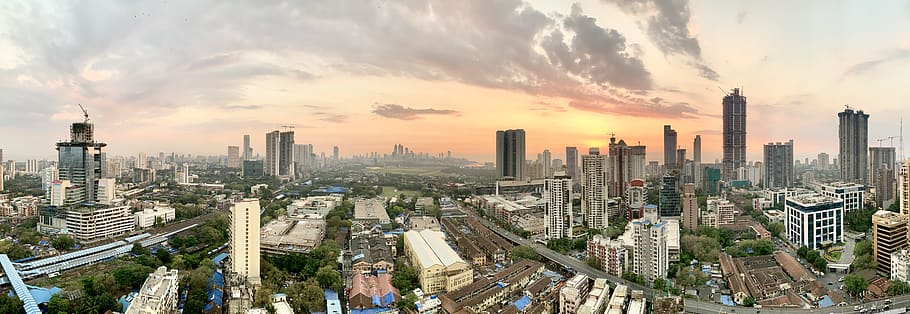India, a land steeped in history and culture, is undergoing a transformative architectural renaissance. As urbanization surges and cities grow vertically, a new generation of modern Indian skyscrapers is emerging. These architectural wonders not only redefine city skylines but also showcase the nation’s prowess in design, engineering, and sustainability. In this article, we embark on a journey to explore these modern marvels that are shaping the future of Indian architecture.
The Rise of Indian Skyscrapers
India’s urban landscape is evolving at a rapid pace, driven by a burgeoning population and the need for efficient land use. Skyscrapers, once a rarity, are now a common sight in major cities like Mumbai, Delhi, and Bengaluru. These towering structures are not only symbols of progress but also testaments to human ingenuity.
Futuristic Designs: Palais Royale, Mumbai
The Palais Royale in Mumbai is a futuristic masterpiece that defies conventional architectural norms. Standing at 320 meters, it is not only one of India’s tallest buildings but also a visual spectacle. What sets Palais Royale apart is its innovative design, featuring a series of rotating wings that give the building a unique, spiraling appearance. This design not only maximizes views but also minimizes direct sunlight exposure, contributing to energy efficiency.
Sustainability Meets Skyscrapers: The Wave One, Noida
The Wave One in Noida is a prime example of how skyscrapers can embrace sustainability. This 41-story tower boasts LEED Gold certification, a testament to its commitment to green building practices. The building incorporates features like rainwater harvesting, efficient lighting, and a green roof. It showcases how modern Indian skyscrapers can harmoniously coexist with the environment.
Bridging the Past and Future: The Namaste Tower, Mumbai
The Namaste Tower in Mumbai is not just a skyscraper; it’s a fusion of history and modernity. Its design draws inspiration from the traditional Indian greeting, “Namaste,” with its hands folded in prayer. This 300-meter-tall structure is set to become an iconic landmark. It’s a reminder that even as India embraces modernity, it continues to honor its cultural roots.
The Sky’s the Limit: Lodha World Towers, Mumbai
Mumbai’s Lodha World Towers are a testament to the city’s relentless ambition. These twin towers, rising to 285 meters, are more than just residential complexes; they are self-contained cities in the sky. They feature lush gardens, a private clubhouse, and even a cricket pitch. The Lodha World Towers redefine luxury living while showcasing India’s growing appetite for vertical communities.
The Future of Vertical Farming: The Capital, Gurugram
The Capital in Gurugram is pushing the boundaries of skyscraper functionality. This innovative building incorporates vertical farming, a concept that could revolutionize urban agriculture. The skyscraper’s design includes terraces with gardens where residents can grow their own produce. It’s a glimpse into a future where skyscrapers not only house people but also sustain them.
Architectural Icons: India Tower, Mumbai
The India Tower in Mumbai is an ambitious project that aims to soar to a height of 700 meters when completed. While the construction is yet to be finalized, the tower represents India’s ambition to join the league of the world’s tallest buildings. It promises to be a symbol of progress and aspiration.
Challenges and Opportunities: The Way Forward
As India continues its journey into the world of skyscrapers, several challenges and opportunities emerge. Urban planning, infrastructure development, and sustainability are critical areas that need attention. The integration of green building practices, efficient transportation systems, and smart technologies will be key to creating holistic urban environments.
The Essence of Modern India
These modern Indian skyscrapers are more than just steel and glass; they embody the spirit of a nation that is forging ahead while cherishing its heritage. They showcase a blend of innovative design, sustainability, and a commitment to excellence. As they redefine the urban landscape, they also redefine our perception of what’s possible.
Reaching New Heights
In conclusion, modern Indian skyscrapers are not mere structures; they are symbols of a nation’s aspirations and achievements. They redefine the skyline, pushing the boundaries of design and sustainability. These architectural wonders are a testament to India’s growth and a glimpse into a future where cities reach new heights, both literally and figuratively.
As we look to the horizon, we can’t help but be excited about the architectural wonders yet to come. India’s journey into the world of skyscrapers is just beginning, and it promises to be a remarkable one. These towering structures are not just buildings; they are the embodiment of India’s dreams and ambitions, and they stand as a testament to the nation’s unwavering spirit of progress.











